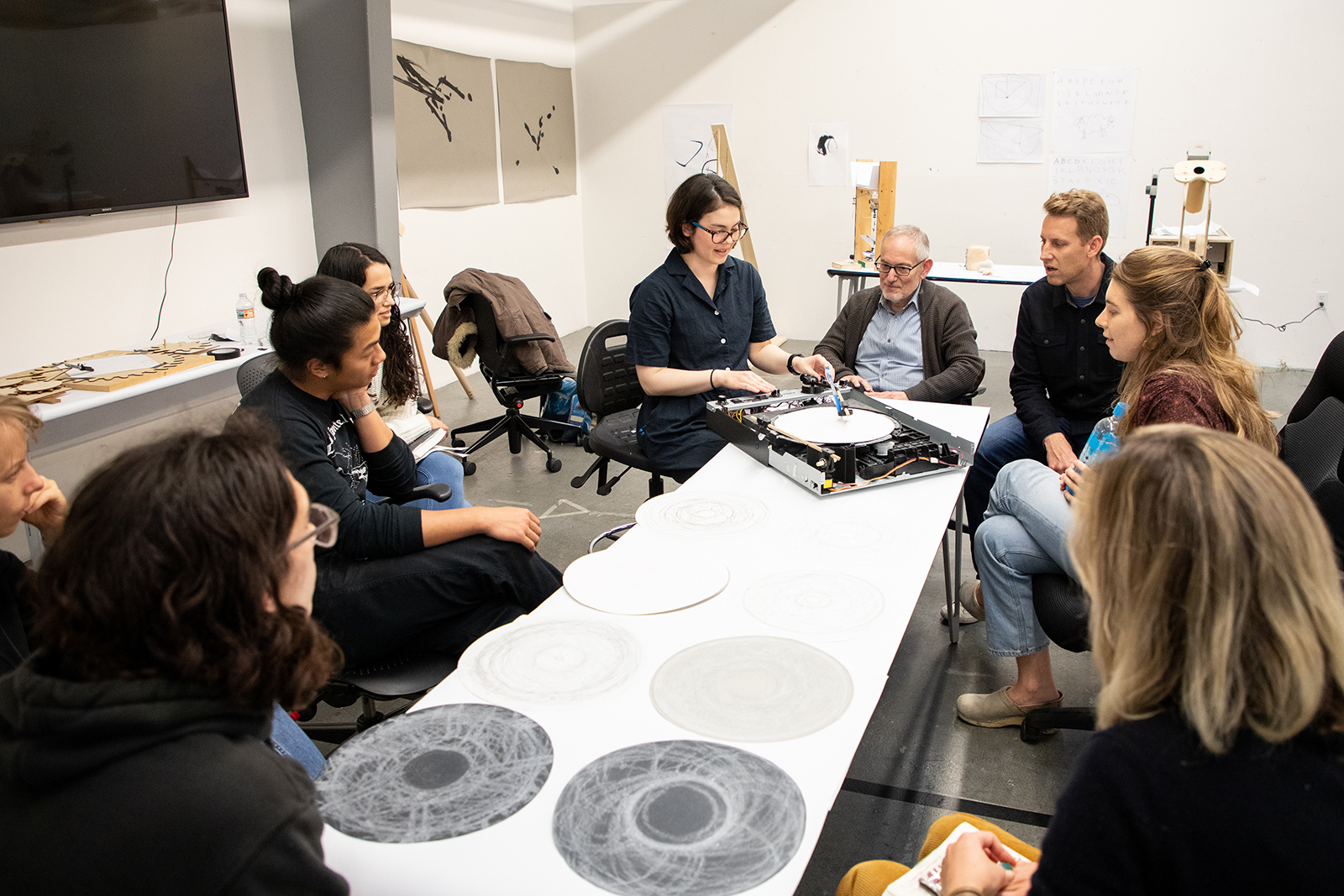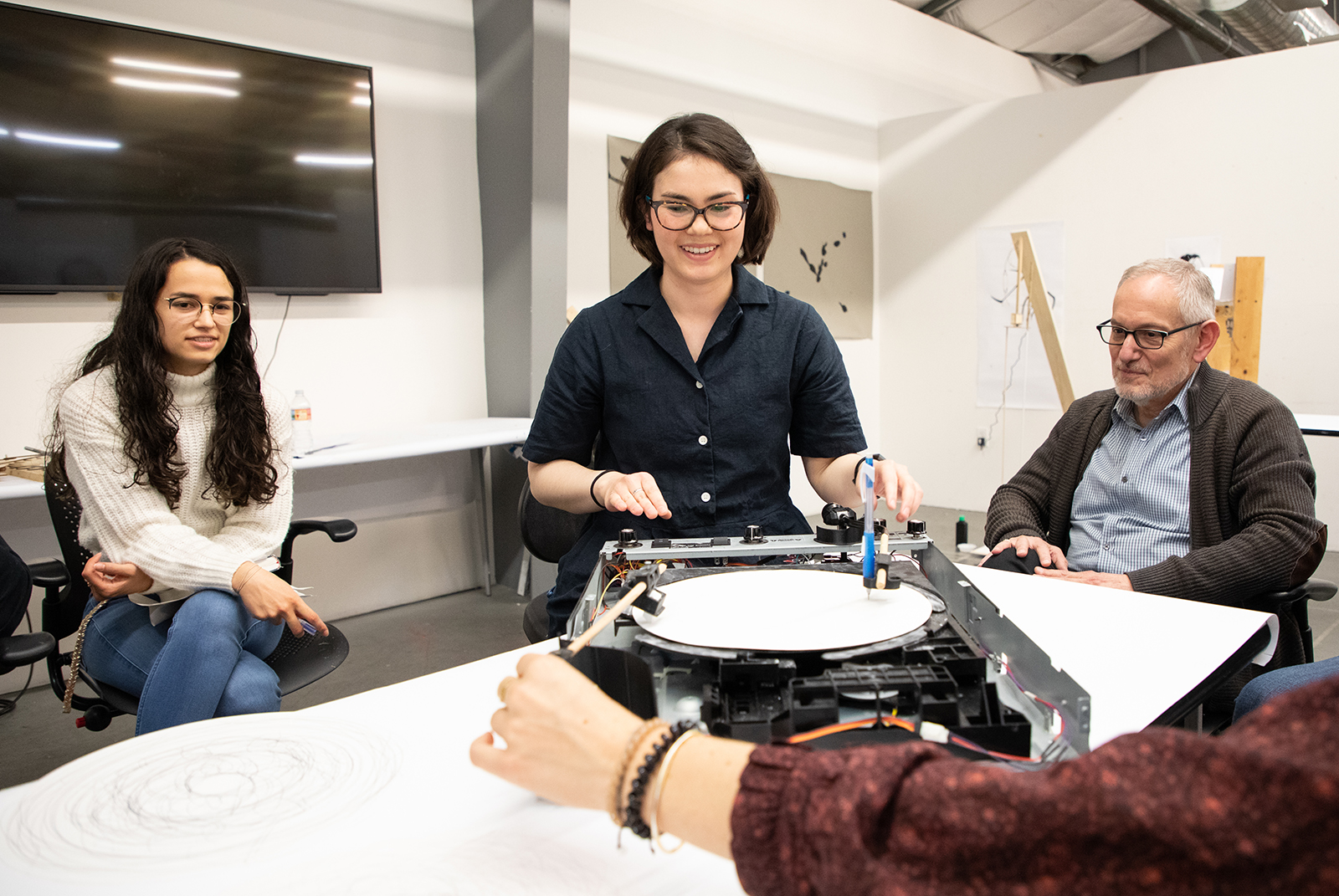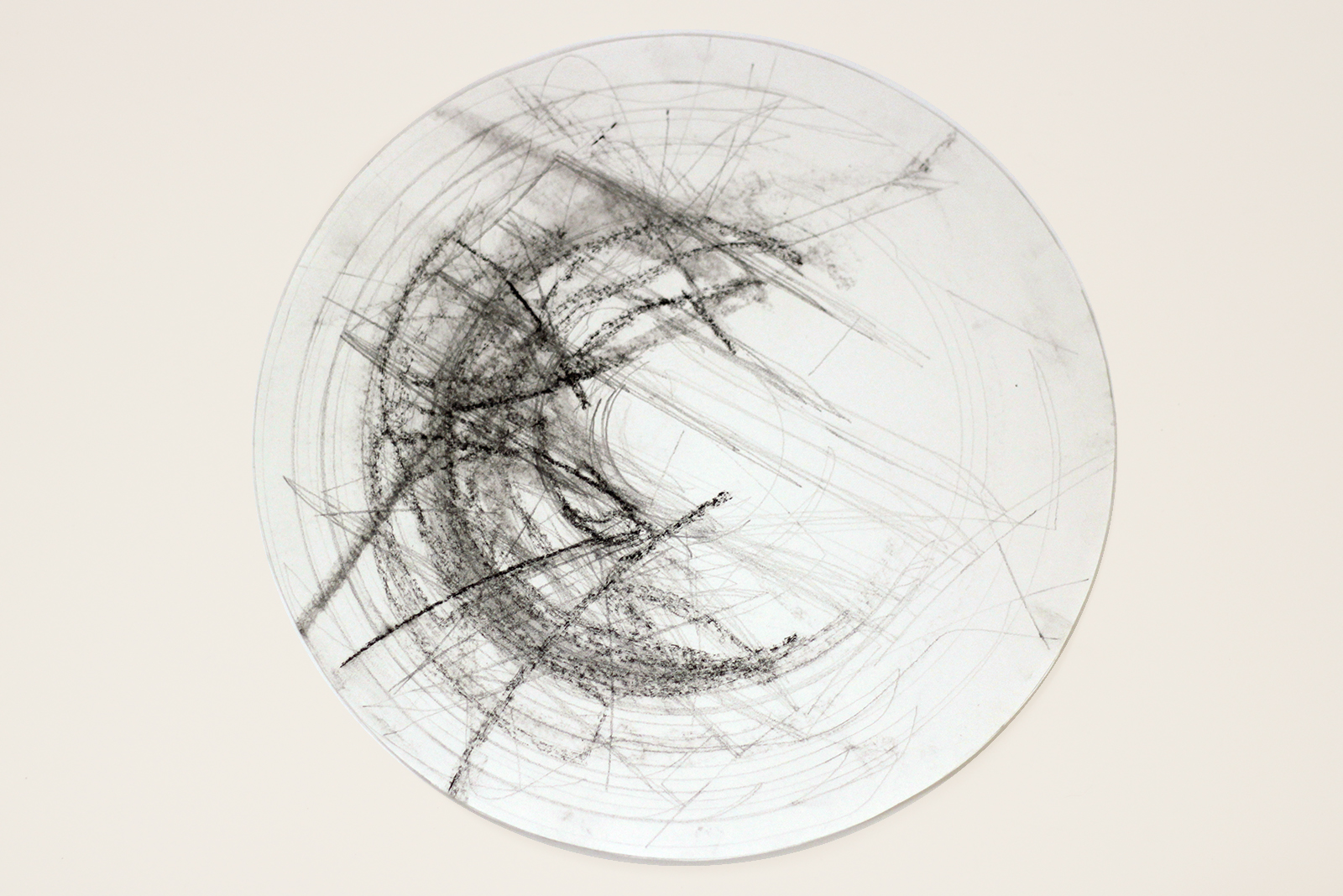






︎ ART | MACHINE
Drawing Machine: Dialogue
While the benefits of technological advancement are numerous and glamorized, the rapid progression of new technology leaves in its wake a growing graveyard of obsolete machines. The lifespan of a device is tied to its utility: a timeline that seems to continually diminish in a throwaway culture. In the ravenous pursuit of growth and advancement——economic as well as technological——planned obsolescence is a strategy in which the life of a product is artificially shortened in order to feed a system that requires consumers to rapidly buy, replace, and chase new technology at the expense of overtaxed natural resources and the growing shadow of that which is discarded.
This project was born of two machines at the end of their utility cycle: a broken turntable and an older model DVD-player. Both devices had been given to a thrift store, where they were being sold for a small, symbolic amount of money. The low price signaled the fact that these items were quickly becoming unusable and therefore un-valuable.
There is poignancy in the stubborn material longevity of a device that is considered no longer useful. In taking apart these machines, I considered each component and mechanism, how each was designed and assembled to execute a series of specific motions to enact a single, desired outcome. With everything disassembled, what remained was a library of pieces that represented a range of motions that could be reassembled, free from the expectations of utility, efficiency, and efficacy. I reconsidered the value of the base materials and mechanisms, liberating them from the confines of their initial use.
Re-combining the disparate components required me to design and manufacture additional pieces to bridge the gaps between mechanisms that had not been made to fit and work together. Through this process, I created something new: a drawing machine that expressed collaboration as well as contradiction. Using the spinning components and retractable body of the DVD player, combined with the arm and base of the turnable, I reconfigured and rewired each distinct motion to be individually controllable in terms of direction and speed. I added an additional arm positioned opposite the arm of the turntable, and affixed drawing implements to the head of each arm. In orchestrating and choreographing the motion of the machine using a series of switches and knobs, movement itself becomes a medium through which the components from two machines are brought into dialogue with one another and with the operator.
The combined mechanisms make new motions and collisions possible, recorded on the circular stage where the two opposing drawing tools make their marks. Each drawing becomes a document of the additive elements of motion, speed, and direction. The marks are sometimes collaborative and sometimes confrontational, echoing the relationship between the two machines that have been brought together as well as the relationship between the operator and the new machine. Overall, it is a playful machine that encourages the operator to explore movement and mechanisms outside of their typical prescribed uses, and forces one to confront a machine that sometimes resists directives and expectations.